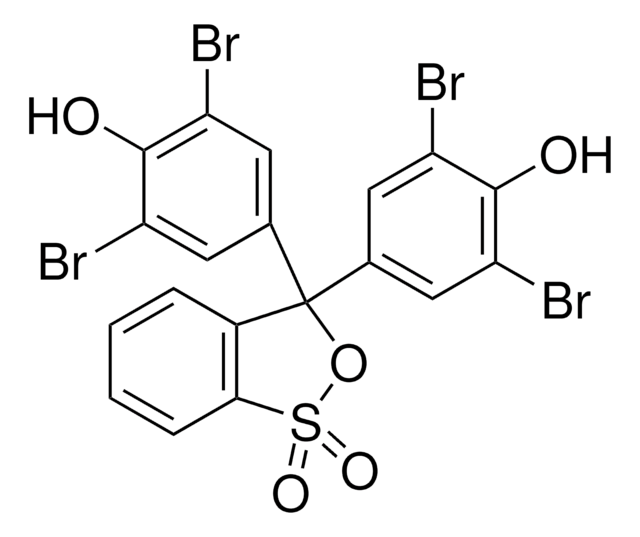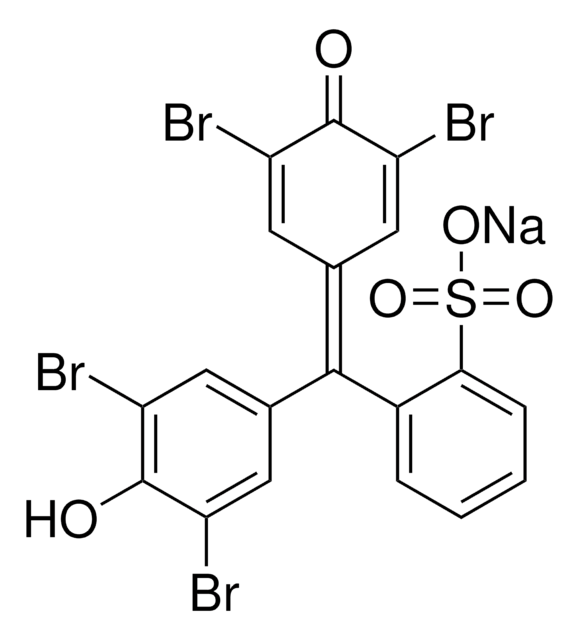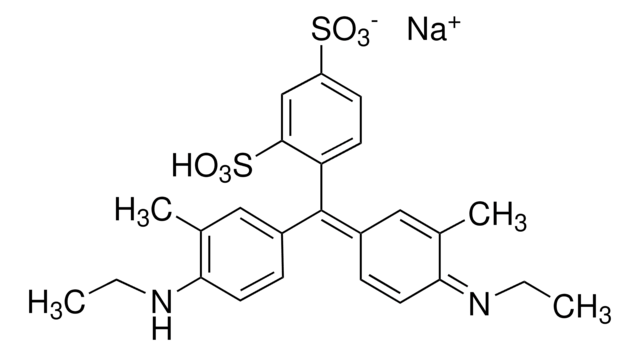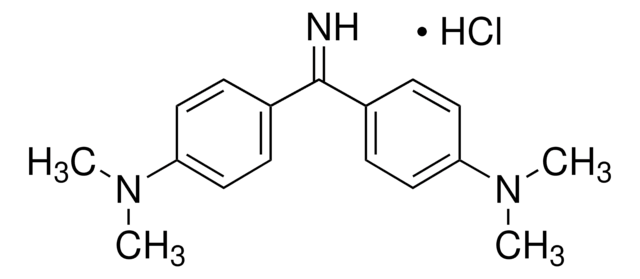Kluczowe dokumenty
B0126
Bromophenol Blue
Powder
Synonim(y):
3′,3′′,5′,5′′-Tetrabromophenolsulfonephthalein, Bromophenol Blue (BPB), Bromphenol Blue Sultone Form
About This Item
Polecane produkty
product name
Bromophenol Blue, titration: suitable
agency
suitable for SM 2310
suitable for SM 2320
Poziom jakości
Postać
powder
metody
titration: suitable
kolor
faint beige to very dark beige
faint orange to very dark orange
visual transition interval
3.0-4.6, yellow-green to blue
mp
273 °C
rozpuszczalność
methanol: 10 mg/mL
Zastosowanie
diagnostic assay manufacturing
hematology
histology
temp. przechowywania
room temp
ciąg SMILES
Oc1c(Br)cc(cc1Br)C2(OS(=O)(=O)c3ccccc23)c4cc(Br)c(O)c(Br)c4
InChI
1S/C19H10Br4O5S/c20-12-5-9(6-13(21)17(12)24)19(10-7-14(22)18(25)15(23)8-10)11-3-1-2-4-16(11)29(26,27)28-19/h1-8,24-25H
Klucz InChI
UDSAIICHUKSCKT-UHFFFAOYSA-N
Szukasz podobnych produktów? Odwiedź Przewodnik dotyczący porównywania produktów
Powiązane kategorie
Opis ogólny
Zastosowanie
Kod klasy składowania
11 - Combustible Solids
Klasa zagrożenia wodnego (WGK)
WGK 3
Temperatura zapłonu (°F)
Not applicable
Temperatura zapłonu (°C)
Not applicable
Środki ochrony indywidualnej
Eyeshields, Gloves, type N95 (US)
Wybierz jedną z najnowszych wersji:
Certyfikaty analizy (CoA)
Nie widzisz odpowiedniej wersji?
Jeśli potrzebujesz konkretnej wersji, możesz wyszukać konkretny certyfikat według numeru partii lub serii.
Masz już ten produkt?
Dokumenty związane z niedawno zakupionymi produktami zostały zamieszczone w Bibliotece dokumentów.
Klienci oglądali również te produkty
Nasz zespół naukowców ma doświadczenie we wszystkich obszarach badań, w tym w naukach przyrodniczych, materiałoznawstwie, syntezie chemicznej, chromatografii, analityce i wielu innych dziedzinach.
Skontaktuj się z zespołem ds. pomocy technicznej








